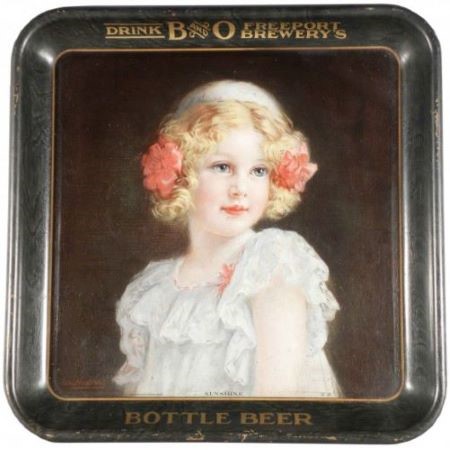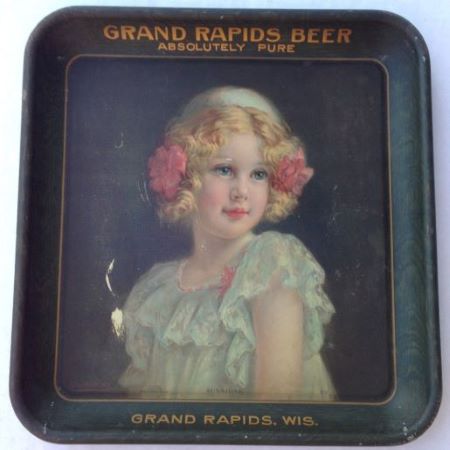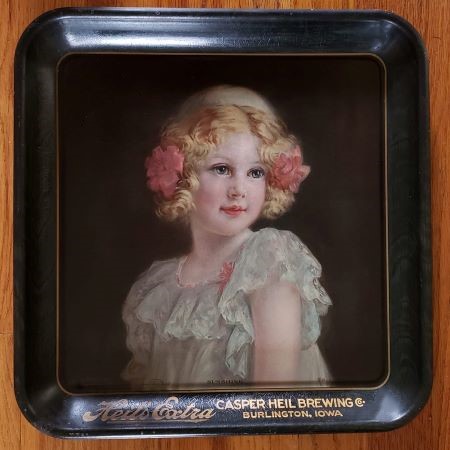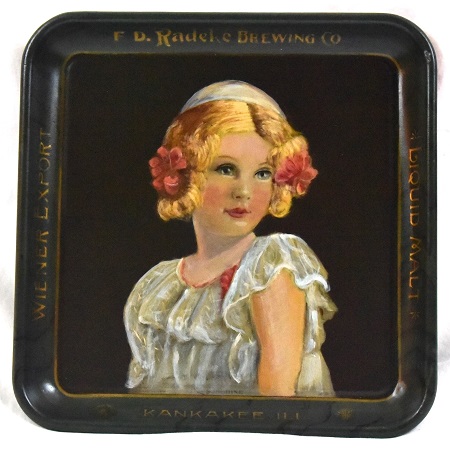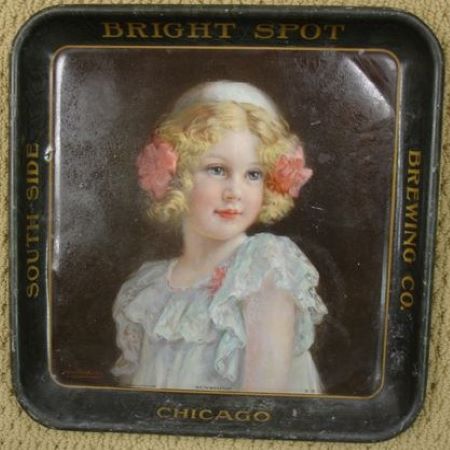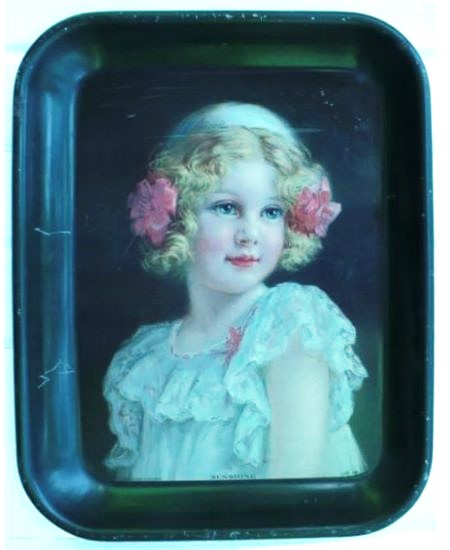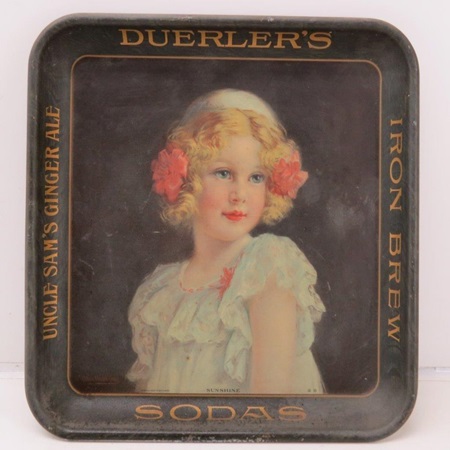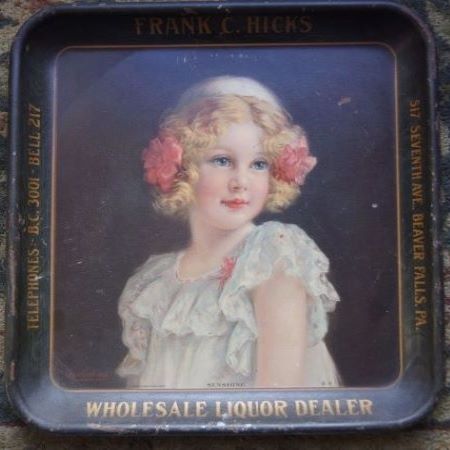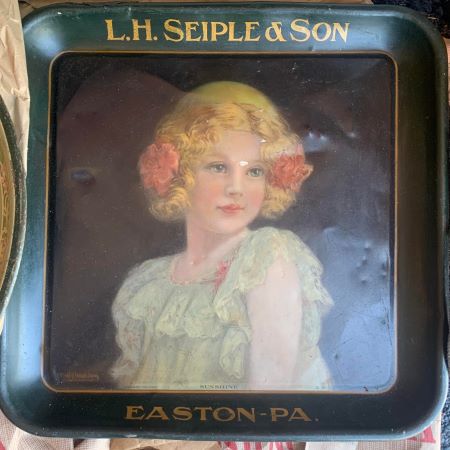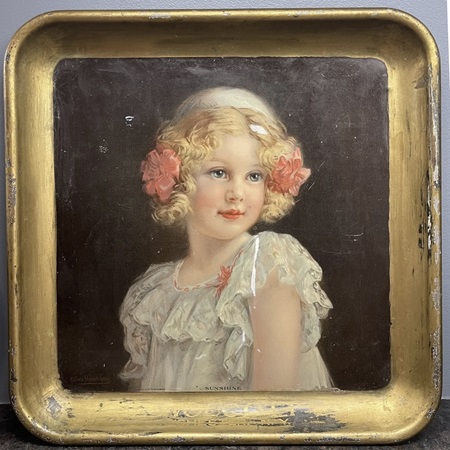The 'Stock' Exchange
The Meek Co.: No. 101 "Sunshine"
The Meek Co.: No. 101 "Sunshine"
Date: 1909 - 1910
Size: 13.25" x 13.25"
Type: Pie
Scarcity: Uncommon
Value: $$$ to $$$$
Condition & Brewer Dependent
Size: 13.25" x 13.25"
Type: Pie
Scarcity: Uncommon
Value: $$$ to $$$$
Condition & Brewer Dependent

General
No. 101 is the first use of a young child for the design since the early Tuscarora and Meek & Beach days. The girl in the pink bonnet (No. 20) from 1901 was the last time a child appeared as the main subject of a design. While children continued to be featured in stock designs through the end of American Art Works catalog, they were always depicted with other children or their mother. This was the last design with a child as the sole focus.
No. 101 is the first use of a young child for the design since the early Tuscarora and Meek & Beach days. The girl in the pink bonnet (No. 20) from 1901 was the last time a child appeared as the main subject of a design. While children continued to be featured in stock designs through the end of American Art Works catalog, they were always depicted with other children or their mother. This was the last design with a child as the sole focus.

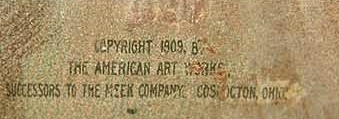
The design is signed “Alice Hirschberg” and carries a 1909 copyright date. There are examples attributed to Meek, as well as American Art Works. It is one of two designs by Alice Hirschberg that Meek/American Art Works used for stock designs (the other being No. 103, “Introduction.”) Her husband, Carl Hirschberg, was also an artist and he was responsible for “The City Cousin” (No. 92).
Alice Hirschberg (née Alice Kerr-Nelson; 1856 - 1913) was a British-born American painter and illustrator. She worked in watercolor and black-and-white, as well as genre subjects and landscapes in oils. A quick look at images attributed to her reveal many of young children. After coming to the United States in 1884, Hirschberg contributed every year to the exhibitions of the American Watercolor Society in New York City. One of her most effective water-colors was Maggie Tulliver in the Red Deeps, from George Eliot's "Mill on the Floss," which she sent to the Society in 1887. Her Trysting Place was published in an etching by William Langson Lathrop, and another of her drawings entitled How de Do was engraved by Frederick E. Girsch and also published. She also illustrated for magazines.
Sahling has an entry in September 1909 for “Stock tray Sunshine, No. 101; also 4 ¼” tray” (there are both full and tip sized tray versions of this design). It seems odd that there is such a long time between stock designs (No. 100 is listed in March 1909), although there is an August 1909 entry for “Ice Cream stock tray No. 104.” Perhaps this was due to uncertainty surrounding the company and its direction. In late 1909 the name was changed and in 1911 a new management/ownership team was brought in led by Charles Frederickson who had a prior affiliation with the company.
Size & Shape and Advertising Placement
“Sunshine” shows up most frequently as a tip tray (where it has a separate stock number, No. 32). As a full sized tray, it appears as both a concave or convex pie; we’ve also encountered square versions, as well as a charger. As a sign, we have only seen a curled corner example. Rims are black and advertising text is gold which we have only seen appear on the rim.
Hager & Price
This is another design that Hager does not discuss other than to include it in his date table for 1909; he does include it in his catalog. This design was popular with a wide variety of business, although a few brewers did sneak in there. Prices for brewery examples are stronger than average compared to most other stock designs. And while non-brewery prices are somewhat lower, they too are higher than average compared to other stock designs.
Alice Hirschberg (née Alice Kerr-Nelson; 1856 - 1913) was a British-born American painter and illustrator. She worked in watercolor and black-and-white, as well as genre subjects and landscapes in oils. A quick look at images attributed to her reveal many of young children. After coming to the United States in 1884, Hirschberg contributed every year to the exhibitions of the American Watercolor Society in New York City. One of her most effective water-colors was Maggie Tulliver in the Red Deeps, from George Eliot's "Mill on the Floss," which she sent to the Society in 1887. Her Trysting Place was published in an etching by William Langson Lathrop, and another of her drawings entitled How de Do was engraved by Frederick E. Girsch and also published. She also illustrated for magazines.
Sahling has an entry in September 1909 for “Stock tray Sunshine, No. 101; also 4 ¼” tray” (there are both full and tip sized tray versions of this design). It seems odd that there is such a long time between stock designs (No. 100 is listed in March 1909), although there is an August 1909 entry for “Ice Cream stock tray No. 104.” Perhaps this was due to uncertainty surrounding the company and its direction. In late 1909 the name was changed and in 1911 a new management/ownership team was brought in led by Charles Frederickson who had a prior affiliation with the company.
Size & Shape and Advertising Placement
“Sunshine” shows up most frequently as a tip tray (where it has a separate stock number, No. 32). As a full sized tray, it appears as both a concave or convex pie; we’ve also encountered square versions, as well as a charger. As a sign, we have only seen a curled corner example. Rims are black and advertising text is gold which we have only seen appear on the rim.
Hager & Price
This is another design that Hager does not discuss other than to include it in his date table for 1909; he does include it in his catalog. This design was popular with a wide variety of business, although a few brewers did sneak in there. Prices for brewery examples are stronger than average compared to most other stock designs. And while non-brewery prices are somewhat lower, they too are higher than average compared to other stock designs.
Confirmed Brewer used Stock Trays
Non-Beer Related & Non-Tray Uses
Click the Picture to Return to Meek & Beach Stock Catalog Page
